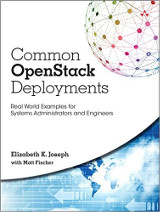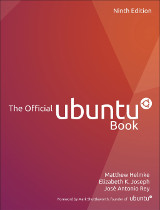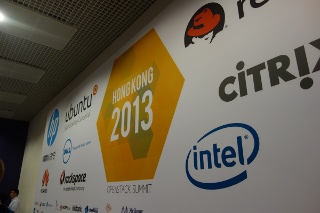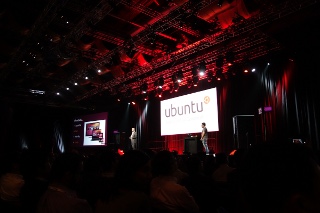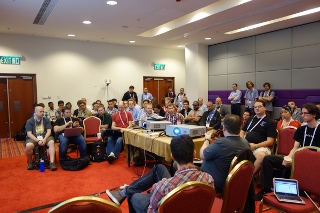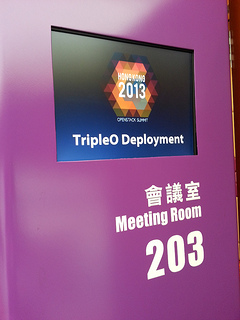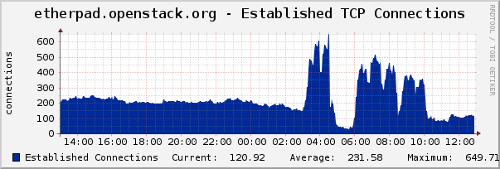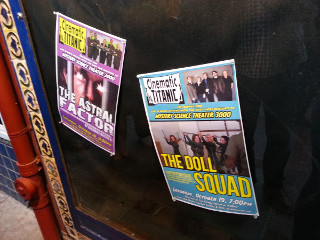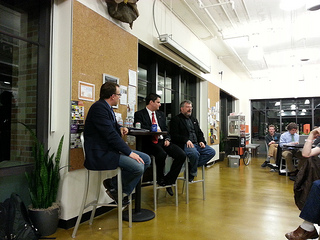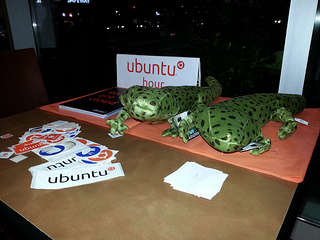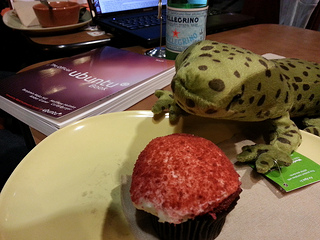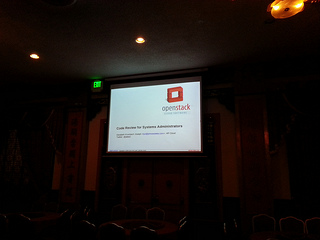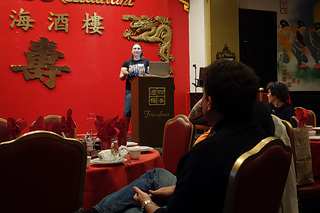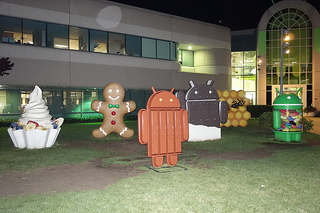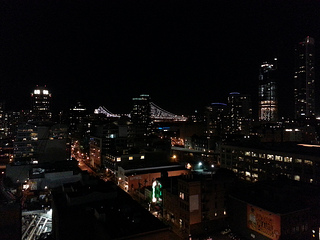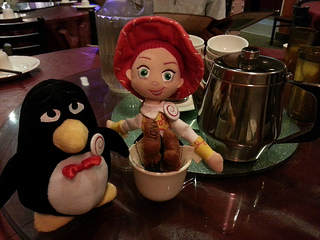Thursday morning! No keynotes today so we went directly into design sessions.
– Integration Testing for Horizon –
Currently the Horizon team depends on manual testing of its integration with the APIs, this session sought to address this and other tests.
A lot of great notes were taken during this session, available here: icehouse-summit-Integration-Testing-for-Horizon.txt
– Ceilometer integration testing –
Now over to visit the Ceilometer team! The project has matured to a point where they want to start putting together Tempest tests. The session covered current blockers, including current issues with using devstack and the database backends. On the Infrastructure side Clark Boylan was able to recommend use of the experimental queue to get tests going slowly and work through the issues as the tests evolve and they shake out the issues. The session wrapped up with discussion about options for stress testing, but that’s a more long term goal.
Copy of notes from this session available here: icehouse-summit-ceilometer-integration-tests.txt
During the 10:30 break several of us got together for a GPG keysigning organized by Jeremy Stanley in order to begin to establish a web of trust with OpenStack contributors. I’m happy to say that I was able to check the IDs and keys of 19 folks at the keysigning.
– Translation tools and scripts –
Transifex is currently used to handle translations of documentation, but they recently became closed source and so is no longer an appropriate option. Aside from the typical concerns (vendor lock-in, lack of control, implied promotion of a proprietary tool) there was also concern that over time the service itself will continue to degrade for open source projects leaving us scrambling for alternatives. In this session Ying Chun Guo (Daisy) presented her analysis of Pootle, TranslateWiki and Zanata as alternatives. It was also noteworthy that the TranslateWiki community is actively interested in helping make their platform useful for OpenStack, so ease of contribution to projects is an important consideration.
A public copy of the analysis spreadsheet is available on Google Docs: Translation Management Comparison. I’ve also downloaded a copy in .ods format Translation_Management_Comparison.ods).
Copy of notes from this session available here: icehouse-summit-translation-tools-and-scripts.txt
– elastic-recheck –
Back in September the elastic-recheck service was launched (see post from Joe Gordon. This has been a very successful project and this session was set up to discuss some of the next steps forward, including improved notification of when logs are ready, improvements to the dashboard, adding new search queries, getting metrics into graphite, documentation and possible future use of Bayesian analysis.
Copy of notes from this session available here: icehouse-summit-elastic-recheck.txt
I had lunch with Anita Kuno and our infrastructure resident Salt guru David Boucha, after which I did a final loop around the expo.
– Testing Rolling Upgrades –
I’d write a lovely, concise description of this session but I don’t actually know that it’s possible because the matrix of upgrades being addressed is a bit tricky to grok. Maybe with pictures. Or maybe the session notes are good enough! Check them here: icehouse-summit-qa-rolling-upgrades.txt
– Grenade Update and Futures –
This session outlined some of the future plans for Grenade, the test harness used to exercise the upgrade process between OpenStack releases. Ongoing work includes getting Grenade set up to test Havana to trunk (it’s still Grizzly to trunk at the moment) and there was some discussion about how to make that less painful now that it’s gating. The requirements discussed in the previous session were acknowledged and discussed at length, including variables that may be used to do service-specific testing. The session wrapped up by talking about the need to test other projects; neutron, ceilometer and heat were mentioned specifically.
Copy of notes from this session available here: icehouse-summit-qa-grenade.txt
– Enablement for multiple nodes test –
The discussion in this session centered around how to enable a multi-node test environment to test services that require it (VM HA, migrate, evacuate, etc). First there was some talk about the non-public cloud hardware available (ie TripleO cloud), and then migrated in to how we can use the public clouds for this, focusing on how networking would work between the cloud VMs (vpn) and then how the testing infrastructor would allocate/assign sets of machines (gearman? Heat?). Then there was discussion about how to handle logs that are generated from the multiple nodes.
Copy of notes from this session available here: icehouse-summit-qa-multi-node.txt
It was then on to the final Infrastructure sessions of the week.
– Requirements project redux –
Now the OpenStack has a global Requirements project so it’s clear to everyone what Python dependencies are required. The session reviewed some of the current pain points and plans to improve it. Issues this past cycle included poor communication between projects when requirements change, dependency issues, and the need to develop a freezing policy for requirements.
Copy of notes from this session available here: icehouse-summit-requirements-project-redux.txt
– Preemptively Integrate the Universe –
Fun session name for the last session of the day! The problem currently is that upstream Python packages updates sometimes breaks things. The proposal in this session was to do a better job of preemptively making sure changes in upstream projects we are friendly with are not going to break us and automatically notifying them when a proposed change does.
Copy of notes from this session available here: icehouse-summit-preemptively-integrate-the.txt
Tonight is a quiet night in for me, I’ll be hitting the hotel gym before grabbing some dinner and turning in to relax before the last day tomorrow.
